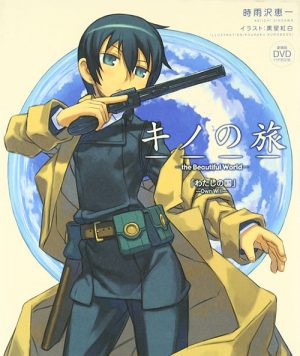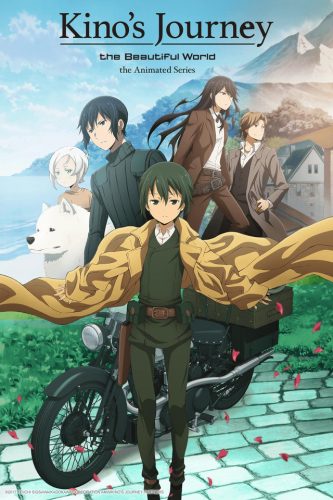
"Someone once told me that when you see the birds flying through the air, it makes them want to go on a journey. "
- Episodes : 12
- Genre : Action, Adventure, Slice of Life
- Airing Date : Oct. 6, 2017 – Dec. 22, 2017
- Producers : Lerche
Kino no Tabi - The Beautiful World - The Animated Series Introduction and Story
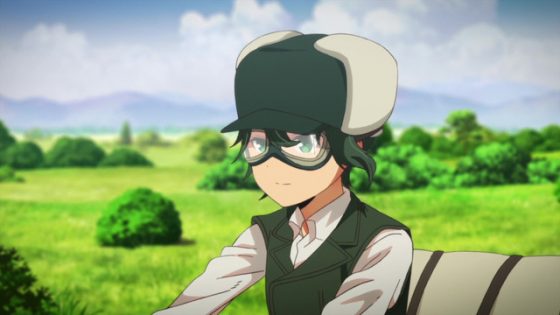
The premise is fairly simple, Kino is a traveler whose companion is Hermes, a talking Motorrad. The structure of the show mirrors its source material, each episode like a chapter from the light novel. Each episode covers a different country, a different theme, a different look into the beautiful world of Kino’s Journey.
Before we continue, I want to state the obvious: Kino’s Journey (2017) has a predecessor. The 2003 adaptation was a beloved work, an animated masterpiece that invoked emotion and thought.
A beautiful world emerged from its decisions: the use of allusions helped remind viewers of its source material (a light novel), the concise use of episode length was methodical, so viewers could understand each country’s themes, the inclusion of original scenes helped consolidate ideas, and lastly, the hands-off approach to exposition allowed viewers to make their own judgments from Kino’s perspective. The 2003 adaptation wanted to focus on the liminal aspects of Kino’s identity, a traveler going between countries, transitioning from different concepts and ideas.
The 2017 adaptation makes decisions that are deliberately different. Other main characters are focused upon and introduced, exposition is used more to explain characters or motivations, and scenes are less like a window and more like a “camera”--the director’s intent is more apparent in how scenes are shot and directed, a hands-on approach to Kino’s Journey. To defend the above points, I’ll be using spoilers. If you’re curious why I’ve come to certain conclusions or interested in scene analysis, read through the spoiler section for Kino’s Journey (2017). Otherwise, I hope other sections can supplement your decision to watch or skip Kino’s Journey, as the points I defend will merely be stated later.
Contains Spoilers
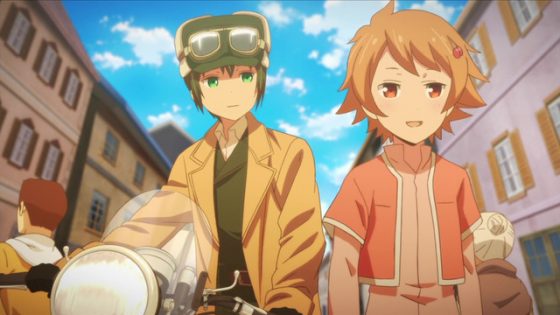
For fans of the original Kino’s Journey (2003), I think a lot of gripes occur over stylistic changes in the 2017 edition. However, some of these concerns are justified: not all of the problems are because of style. Some arise because the director is still learning his trade, his style, and visual techniques. For the time being, I’ll focus on how the 2017 version handles exposition. Doing so will explain how Kino’s Journey (2017) handles its other points: a larger focus on other characters and its hands-on approach.
One of the strengths of a visual medium is its potential to show. Moving away from a text-based medium means you’re given different opportunities for conveying art, and for those anticipating more of a “showing than telling” approach, heavy exposition feels like a lack of imagination--an inability to convert words into images. At the end of episode 4 (Ship Country), Hermes takes the reigns. He explains details about Ti, a newly introduced main character, and her origins. For nearly 2 minutes (17:15 to 19:00), Hermes explains the context of her background and her relationship with the rulers of the country. This might have been okay, but the director is spread thin.
He intends to make these 2 minutes cover one of his goals: a new, stronger focus on other characters. However, Ti is new, a character unavailable in the original. Both new and old audience need information, but not in the way it’s handled. Hermes goes on to answer an assortment of questions about Ti and the Ship Country. By doing so, Hermes exerts an iron-handed control of the narrative--you’re being told why; you no longer need to think. If the goal was to control the narrative like how the rulers control a country, they provide visual evidence. Allow viewers to think that.
There were opportunities to do so. Throughout the episode, Ti’s mindset is obscured. Her lack of words makes her a strange candidate as a guide, and yet she knows so much about the Ship Country. During walks that showcase the country, internal memories could be shown. If that’s so abhorrent, then during the exposition scene, instead of zooming in on Ti’s face, why not zoom in on her thoughts?
It’s not like the director is incapable. If you like his style, then episode 7 (Historic Country) uses exposition in a better manner. In this episode, a letter containing the demands of Master and her apprentice is read by corrupt officials. The scenes of their frustration play as different officials read the demands. As the letter is read, different speakers emerge. The masters handle the introduction, “To whom it may concern… I hope you and all the officers are enjoying good health.” The Master’s voice is serious and formal, her part short.
The audio transitions to the apprentice who interprets the “serious” demands in a jovial, joking manner. During this part, we get a glimpse of Master in a rather lax position. She is sleeping with a cap over her face, a possible explanation for her abrupt part in the letter. Transitioning from the apprentice we are treated to a newscaster. Shot from a high angle, the newscaster relays the rest of the demands and then explains the police’s response.
While looming over the television, the apprentice overhears this information and punctuates the scene: “Sounds like we can take it easy until nightfall.” Within the span of 35 seconds we learn about character personality, the police response, the contrast between the lax protagonists and their situation, and shortly after, the relevance of that scene.
The news report is why our protagonists can stay relaxed. It’s why neither of them is tense or concerned about the police. A news report might be a hackneyed device for exposition, but its relevance to the story helps its acceptance: how it’s handled makes it good. Three days might be enough for Kino to understand a country, but 1 episode is barely enough for us. Consolidating the visuals and dialogue in a meaningful way--that’s the director’s job. It’s what makes that profession an art. Kino’s Journey - Beautiful World - The Animated Series was surprising. At times, unflatteringly so. I thought it was impossible for the show to come back from its mistakes, but then you get an episode like 6 (In the Clouds), and you reel back, wondering if this was the same director. And it doesn’t stop. Did someone light a fire beneath the guy?
If fire is his element, then lighting is his specialty. This guy knows his light/dark contrasts. It was apparent in episode 6 and more so in exponentially important episode: Country of Adults (episode 11). Here is where you judge once and for all if you truly like or dislike his style. Here, he’s not willing to compromise his vision. Shots are done thematically to emphasize distance and connection.
He stages character movement through spaces, creates divides that make it obvious what stands between the old and young Kino. Sometimes what’s between them is a connection, a bird, a familiar Motorrad. Sometimes it’s the very thing that pushes them apart, young Kino’s family. His unwillingness to compromise creates weird shots where Hermes is strikingly out of place, his CG breaking viewers out of immersion.
But he doesn’t compromise. He needs to make something obvious: that Hermes is part of the picture, and so are both Kinos. Shots will sacrifice aesthetics for thematic quality, but is it worth it? Perhaps the best scene in the episode is when young Kino makes her decision.
A scene that casts its actors in the shade. A scene where travelers are to the left, “fair adults” are to the right, and young Kino is firmly between. This scene is iconic for young Kino’s identity--it’s what makes her into that liminal figure, the traveler with freedom, the very person she is today.
In the shadow of the hotel building, firmly placed into the background are all the actors submerged in Kino’s past. In the foreground, splitting the scene evenly is a road illuminated by light. When the critical moment arises, and it’s do or die, the thematic and aesthetic qualities of the episode are revealed.
Split in the middle between the future she wants and the past that will kill her, she grasps freedom by its handles. She makes a pact with Hermes and shifts her weight--her balance-- into the Motorrad. Leaving her former place, she breaks the boundary she stood in between--in the background no longer, Kino has pushed herself firmly into the foreground.
She is illuminated, the center of attention, the spotlight. Now in the forefront, she dispels the shadow of her past and travels a road cast in natural light. She follows a bird until she emerges outside of the city. Past the gate, light erupts, casting a hue never present before in the episode. The sky, the same color as the bird she followed. The light, brighter than it ever was. This is what it means to travel. This is the Kino’s Journey I knew and loved. Could you blame me for being surprised?
The scene I described was made by the same director I’ve begrudgingly accepted. The same director who, within the span of 1.5 minutes, reminds the viewer 3 times about the title of an episode (Country of Liars: 22:00/23:32 title drops, 23:04 verbally). The same director who hammers us through exposition like we’re placed on an anvil. The same director who closed off Kino’s Journey (2017) with a horrendous massacre of an episode. Yes, that director.
When Tomohisa Taguchi is up to bat, he does one of two things: strikes out or hits the ball soaring out the stadium. The biggest compliment I can give him is he always swings hard, and while this doesn’t work on obtuse or more subtle episodes when it does, it’s a home run. For all my gripes with the series, he delivered some episodes that exemplified Kino’s Journey--he showed a beautiful world. He can be proud of that.
What We Liked About Kino’s Journey - Beautiful World - The Animated Series
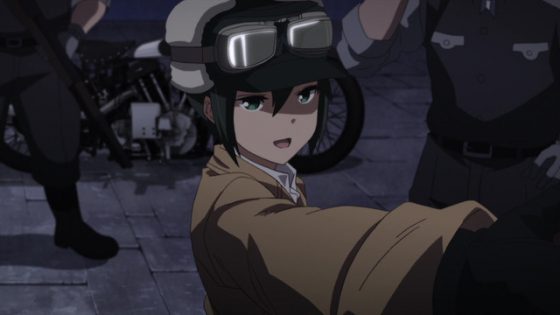
At first, I had trouble accepting the changes in the 2017 adaptation. To me, the original was like a window, an opening that the viewer could observe through. Kino’s Journey (2017) is more like a camera, a physical object that can be carried around, shot with an intention to say something. Having concepts moralized to me through the lens of that “camera” was something I fought against, but grew to appreciate at certain times.
Those certain times were the episode remakes, countries that had been shown previously in the original. In these remade episodes, information no longer needed to be shoved for viewers to absorb. The director had more freedom to interpret the source material, and he did. He took risks because he could rely on an audience that already knew--the old viewers.
Remakes weren’t the only positives. His understanding of how to move a shot – how the panning and different angles of the same scene can inform the viewer – synergized with his awareness of lighting and physical space.
Discussion Time
Fans of the original Kino’s Journey will have to be wary. Go into this with an explicit understanding: this is not the same style as the original. Take a moment to compare the resumes of Tomohisa Taguchi (2017 director) and Nakamura Ryuutarou (2003 director).
Each director has worked on different projects, and with that work comes an awareness on how to portray different ideas and the experience to make them work. If we’re defining experience by number and restricting it only their role as a director, then Nakamura has directed 13 animated projects to Tomohisa’s 6.
Experience is definitely a factor, but also awareness of topics. Kino’s Journey is quite an ordeal. Each country is a different idea and theme, ready to challenge a director and their ability to convey concepts visually.
Episodes might require a different approach, and a director’s ability to adapt to the needs and wants of a theme won’t always mesh with a director’s strengths. Despite these challenges, I can think of 2 major positives that define the 2017 adaptation: the focus and inclusion of other major characters and a different style of scene direction.
Why You Should Watch Kino’s Journey - Beautiful World - The Animated Series
Ultimately, I can only recommend this show to viewers who can accept imperfections. Not every episode is going to be similar in quality, and this can easily drag down the experience. If you’re able to accept this, then here are 2 reasons to watch this show.
1. A Larger Cast of Main Characters

If you ever read wondered how other characters would experience the beautiful world, then the 2017 adaptation allows that to be seen. With a heavier focus on other characters, this Kino’s Journey welcomes new travelers unseen in the original. Multiple episodes are given to these new faces allowing new and old fans to see through their eyes.
2. A Different Perspective for Scene Direction
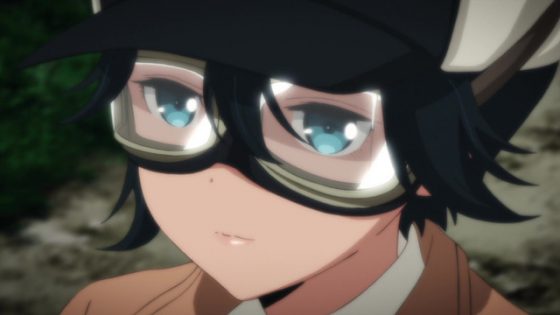
Tomohisa Taguchi has this unnerving ability to swing for the fences. He understands the differences he wants to emphasize, and knowing what the original represented, he changed the adaptation to a uniquely different experience. He won’t always hit the ball, but visually he commands a skill that allows certain episodes to shine.
His more overt camera usage is apparent. How it sways, how it captures shot/reverse shot in dialogue, how it emphasizes lighting during certain scenes--all of this is indicative of his more hands-on approach to Kino’s Journey. If this is your primary interest, I recommend episodes 6 and 11. If you’re here for the flowers and not the thorns, add episodes 1, 5, and 7 - 10. If you’re willing to traverse the deserts to see the both the ugly and beautiful, then I hope you have a talking motorcycle to keep you company.
Why You Should Skip Kino’s Journey - Beautiful World - The Animated Series
When adapting a work from one medium to another, a lot of problems can occur. As stated before, the themes of a story won’t always mesh well with a director’s style, and this creates a lot of glaring errors in the 2017 adaptation.
1. An Overemphasis on Exposition
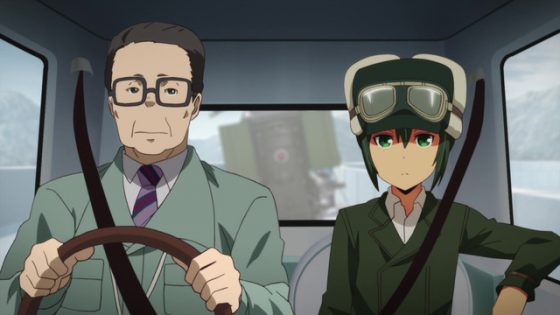
Exposition is where the director’s style conflicts with the story’s goals. Exposition is where he introduces characters, where he slips in creativity, and where glaring problems emerge. His hands-on approach to Kino’s Journey synergizes with how different characters are more of a focus, but all of this gets hampered during what’s barely dialogue.
Characters will expound about descriptions that should have been shown, commandeering your attention away from visualizing the scene or making your own interpretations. The hands-on approach doesn’t always work, especially when details are hammered into your head without consideration.
2. Inconsistent Visual Aesthetics & CG that Breaks Immersion
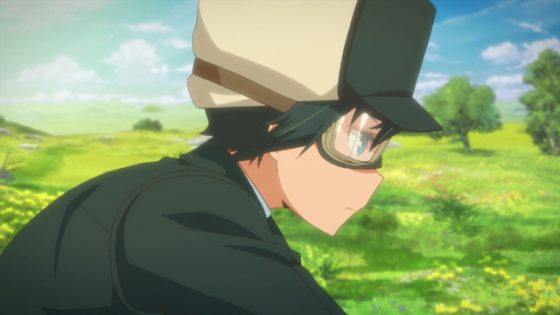
There’s one particular episode where two title drops and then a verbal reminder happen within the span of 1.5 minutes. There are multiple episodes where CG usage breaks your immersion--the inclusion of CG breaks the aesthetics of the scene, creating a glaring contrast that burns into your eyes.
Some scenes have such telling problems that I’d be surprised if viewers didn’t notice them. If you’re a person who values consistency above all else, this is not the show for you.
Final Thoughts
Kino’s Journey - Beautiful World - The Animated Series has both glaring issues and remarkable episodes. The stylistic difference may turn away fans of the old series, but for those who are accepting of faults, this adaptation is still worth a watch.
Recommended Post
Kino no Tabi - The Beautiful World- - Fall 2017
Recommended Post


